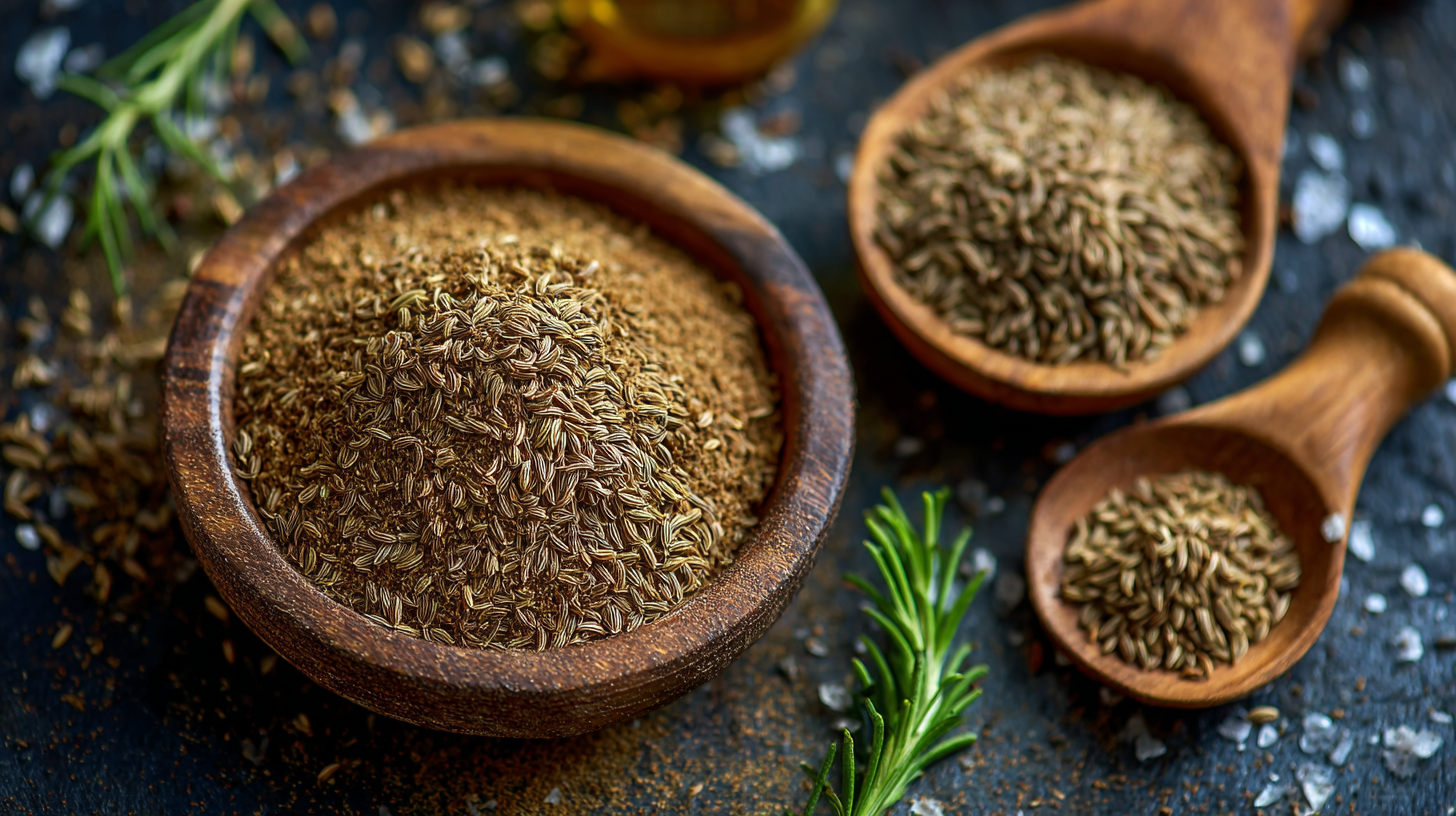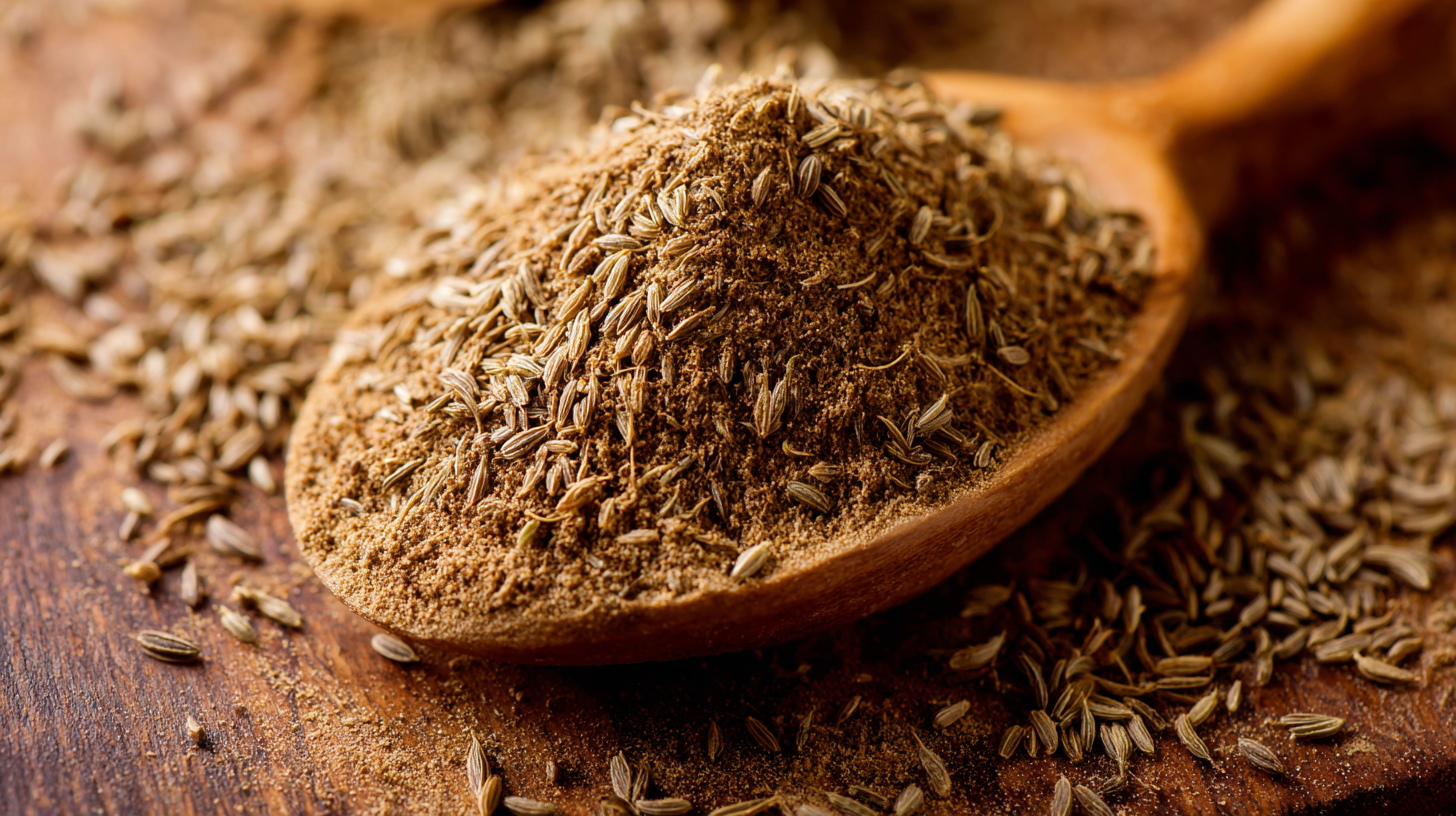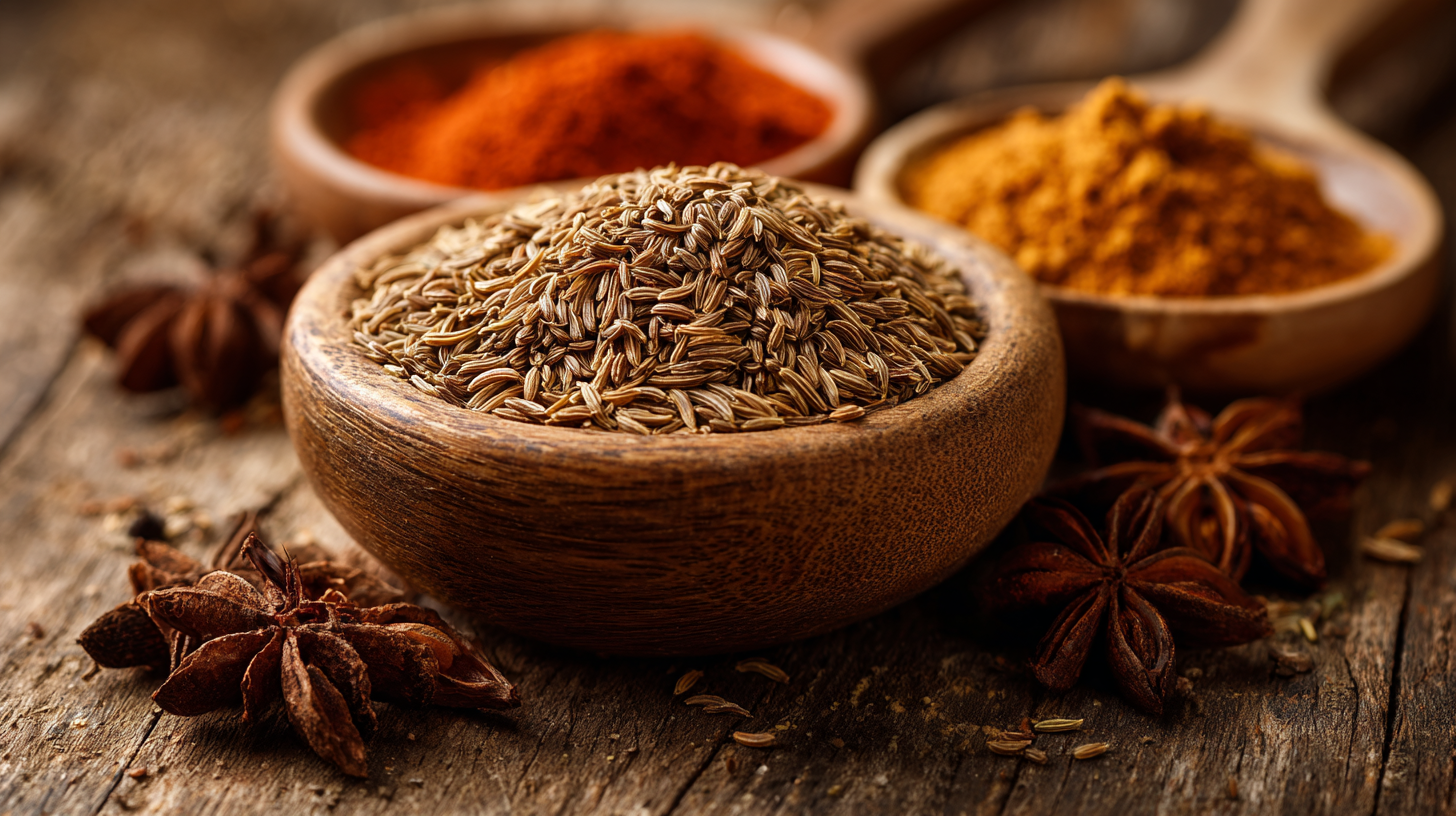 Cumin Seed, a cornerstone spice in culinary traditions worldwide, has gained significant attention not only for its distinctive flavor but also for its health benefits and economic value in the food industry. According to a report by Grand View Research, the global cumin market was valued at approximately USD 1.49 billion in 2020 and is projected to grow at a compound annual growth rate (CAGR) of 4.5% from 2021 to 2028. This growth can be attributed to the increasing consumer preference for natural and organic ingredients, along with a rising trend in global cuisines that integrate diverse flavor profiles. From Indian curries to Middle Eastern dishes and Mexican salsas, the versatility of Cumin Seed lends itself to a myriad of applications that enhance culinary experiences. As we unlock the secrets of cumin's best usages across various cultures, we not only celebrate its rich history but also explore its potential to captivate palates and enrich dishes globally in the years to come.
Cumin Seed, a cornerstone spice in culinary traditions worldwide, has gained significant attention not only for its distinctive flavor but also for its health benefits and economic value in the food industry. According to a report by Grand View Research, the global cumin market was valued at approximately USD 1.49 billion in 2020 and is projected to grow at a compound annual growth rate (CAGR) of 4.5% from 2021 to 2028. This growth can be attributed to the increasing consumer preference for natural and organic ingredients, along with a rising trend in global cuisines that integrate diverse flavor profiles. From Indian curries to Middle Eastern dishes and Mexican salsas, the versatility of Cumin Seed lends itself to a myriad of applications that enhance culinary experiences. As we unlock the secrets of cumin's best usages across various cultures, we not only celebrate its rich history but also explore its potential to captivate palates and enrich dishes globally in the years to come.
Cumin seeds, a staple in global cuisines, showcase a rich variety of flavors and uses that reflect the cultural heritage of their regions. Understanding the different varieties of cumin seeds is crucial for culinary enthusiasts and professional chefs alike. In India, for instance, Gujarat has become a hub for cumin production, boasting the highest productivity of 1.04 MT/ha in 2018. This state’s specific climatic conditions and soil types contribute to the unique aromatic profiles of its cumin varieties, making it an essential ingredient in both traditional and modern dishes.
Globally, cumin seeds can be categorized mainly into two varieties: Cuminum cyminum, commonly known as ordinary cumin, and black cumin (Nigella sativa). Each variety offers distinct flavors, with ordinary cumin known for its warm, earthy tones, while black cumin imparts a slightly bitter note. These varieties not only enrich diverse cuisines—from Indian curries to Middle Eastern dishes—but also serve various health benefits. According to recent studies, cumin is recognized for its antioxidant and anti-inflammatory properties, making it a valuable addition to a healthy diet. Exploring these global variations in cumin seed usage can elevate culinary experiences, allowing for an authentic taste of different cultures.
When it comes to selecting quality cumin seeds, understanding key factors is essential for both culinary and health purposes. Recent studies have revealed that the yield and chemical composition of cumin essential oil can vary significantly based on geographic origin. Research indicates that cumin seeds sourced from different regions can contain varying levels of phytochemicals, which are crucial for both flavor and health benefits. For instance, cumin seeds from certain areas may have higher concentrations of compounds that contribute to their distinct taste and aroma, making them more desirable in various cuisines.
On the market front, the rise in adulteration poses a serious challenge. A recent crackdown on fake cumin sales in Mumbai highlighted the importance of identifying authentic seeds. Experts suggest that consumers should be aware of key indicators such as color variation, flavor intensity, and aroma strength. Furthermore, heat-induced quality loss during grinding presents another technical challenge in maintaining the integrity of cumin seeds. The choice of grinding technique—whether convectional or superfine—can greatly impact the final product. By staying informed about these factors and utilizing rigorous quality assessments, both consumers and culinary professionals can ensure they are using the best cumin for their dishes.
When it comes to selecting premium cumin seeds, the choice of manufacturers can significantly influence flavor profiles and quality. According to a 2022 industry report by the Research Institute of Spices and Herbs, more than 50% of global cumin seed exports come from India, with the country being known for its robust flavor spectrum that varies by region. For culinary professionals and enthusiasts alike, understanding the nuances of different suppliers can enhance any dish, making it essential to compare offerings carefully.

In the market, brands like 'Spice King' and 'Herb & Spice Co.' have emerged as leaders in providing high-quality cumin seeds. A recent consumer survey noted that 78% of chefs preferred Spice King for its consistent quality and earthy aroma, which is attributed to their stringent sourcing processes. Additionally, Herb & Spice Co. boasts an organic certification, appealing to health-conscious consumers and gourmet chefs, showcasing how premium sourcing can meet the demands of today's culinary landscape. Selecting the right manufacturer not only elevates a dish but also supports sustainable practices in the spice industry, guaranteeing freshness and flavor.
Cumin seeds, known for their warm, earthy flavor, play a crucial role in cuisines all over the world. In Indian cooking, cumin is often toasted and ground into spice blends like garam masala, imparting depth to curries and stews. Its use can also be found in popular dishes such as biryani, where it enhances the aromatic profile alongside other spices. Furthermore, in Mexican cuisine, cumin is integral to dishes like chili con carne and tacos, where it adds warmth and complexity that balance the freshness of other ingredients.

Beyond these regions, the Middle Eastern culinary tradition showcases cumin in dishes such as falafel and roasted meats, where it complements the flavors of garlic and parsley. North African spice mixes, like ras el hanout, often feature cumin as a star component, lending a distinctive taste to tagines and couscous. As we explore these diverse culinary practices, it becomes clear that cumin seed usage transcends borders, connecting global cuisines through its versatile flavor and aromatic qualities.
Cumin seeds are a staple in kitchens around the world, valued not only for their robust flavor but also for their numerous health benefits. However, as their popularity grows, so does the imperative for sustainable sourcing. According to a report by the Food and Agriculture Organization (FAO), global production of cumin seeds has increased by nearly 50% over the last decade, highlighting a rising demand that can strain local ecosystems and farming practices. To combat this, ethical sourcing practices are becoming essential in the cumin trade. These practices include ensuring fair wages for farmers, promoting organic farming methods, and implementing water conservation strategies.
Many organizations are now focusing on sustainable agricultural practices that minimize environmental impact. For instance, the International Trade Centre (ITC) notes that organic cumin farming could reduce carbon emissions by up to 20% compared to conventional methods. This encourages not only better soil health and crop yield but also enhances the livelihood of farmers engaged in such practices. Consumers are increasingly drawn to sustainably sourced products, with market analysis revealing that 66% of global consumers are willing to pay more for sustainable brands. This shift demonstrates that ethical practices in cumin seed production are not just an option but a necessity for future food security and ecological balance.
This bar chart demonstrates the usage of cumin seeds across various global cuisines. The data reflects the estimated percentage of recipes utilizing cumin seeds as a key ingredient in different regions. Sustainable sourcing and ethical practices in cumin seed production are essential for preserving these culinary traditions.
